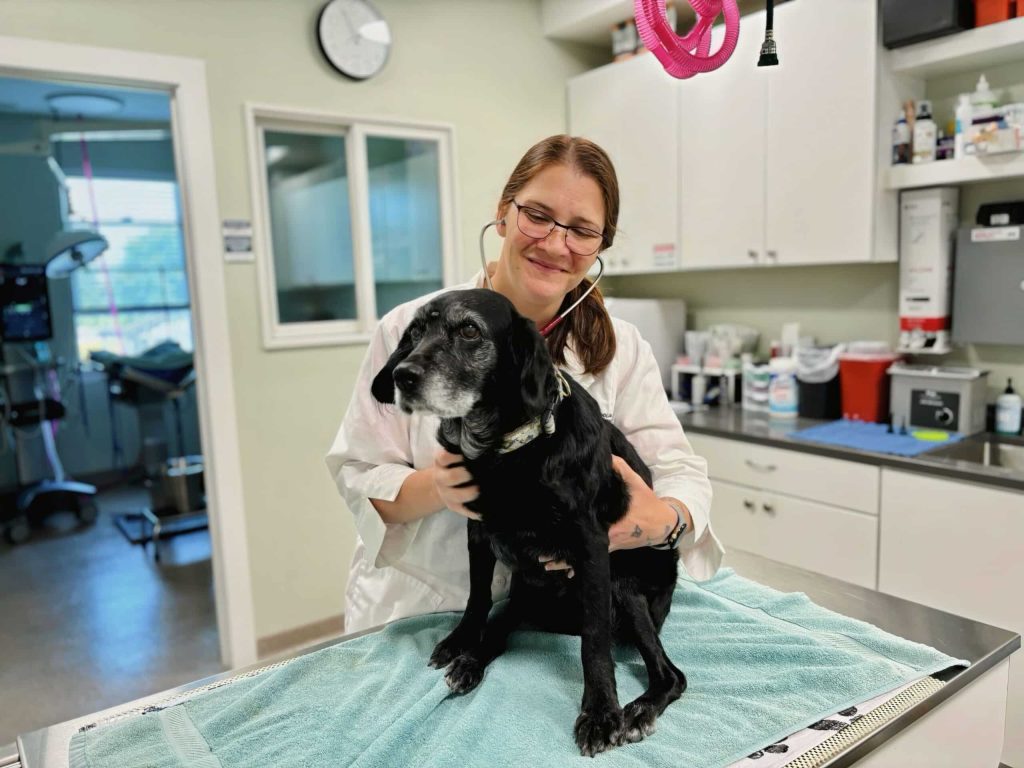As we move further into the 21st century, our understanding of pet health continues to evolve, helping us take better care of our furry companions. However, despite advancements in veterinary medicine, many pets still suffer from common health problems that can affect their quality of life. With pets becoming more like family members, ensuring their well-being is not just a responsibility, but a priority. In this article, we’ll explore the most common pet health issues in 2024, offer preventive care strategies to minimize risks, and delve into emerging treatments and innovations in pet healthcare.
Overview of the Most Common Health Issues Pets Face Today
Pets, like humans, can suffer from a range of health problems that may vary by breed, age, and lifestyle. However, there are certain issues that are consistently common across all pets. Understanding these problems is key to taking proactive measures to address them.
1. Obesity
Obesity has become one of the most prevalent health issues affecting pets worldwide, particularly in dogs and cats. According to various studies, nearly 60% of dogs and cats are overweight or obese, which is a significant concern for pet health in 2024.
Causes:
- Overfeeding
- Lack of physical activity
- Excessive treats or table scraps
- Genetics (some breeds are more prone to obesity)
Health Risks:
Obesity in pets can lead to a range of health problems, including:
- Heart disease
- Diabetes
- Joint problems, such as arthritis
- Reduced life expectancy
2. Dental Disease
Dental health is another area where pets commonly suffer. According to the American Veterinary Dental Society, over 80% of dogs and 70% of cats show signs of oral disease by the age of three. Dental disease is a silent problem that can lead to severe pain and even systemic illness if left untreated.
Causes:
- Poor oral hygiene
- Inadequate diet
- Lack of regular dental checkups
Health Risks:
Dental disease in pets can cause:
- Gum infections
- Tooth loss
- Heart and kidney problems due to bacteria entering the bloodstream
3. Fleas and Ticks
Fleas and ticks are external parasites that affect millions of pets each year. While these pests are more common in certain seasons, they can be a year-round problem in some regions.
Causes:
- Outdoor exposure, especially in wooded or grassy areas
- Infected other animals (dogs, cats, wild animals)
Health Risks:
Fleas and ticks can cause:
- Flea allergy dermatitis (skin irritation)
- Lyme disease (ticks)
- Anemia in severe cases (fleas)
- Other vector-borne diseases like Ehrlichiosis and Babesiosis
4. Arthritis and Joint Problems
Joint problems, particularly arthritis, are increasingly common in older pets, with many dogs and cats suffering from reduced mobility and chronic pain due to wear and tear on their joints.
Causes:
- Age-related degeneration
- Obesity (increased weight strains joints)
- Genetic factors in certain breeds (e.g., hip dysplasia in large dogs)
Health Risks:
Arthritis can lead to:
- Pain and stiffness, making it difficult for pets to walk or jump
- Loss of muscle mass from inactivity
- Decreased quality of life and inability to engage in normal activities
5. Skin Conditions
Skin issues are common in pets, ranging from allergies to infections. Itchy, irritated skin can cause pets to scratch excessively, which can lead to further complications like skin infections.
Causes:
- Flea infestations
- Allergies to food, environment (pollen, dust mites), or grooming products
- Bacterial or fungal infections
Health Risks:
Skin conditions can cause:
- Infections due to excessive scratching or biting
- Hair loss and skin damage
- Chronic discomfort for the pet
6. Ear Infections
Ear infections are common in both dogs and cats, particularly those with floppy ears (like Cocker Spaniels) or long-haired breeds. They are often caused by bacteria, yeast, or ear mites.
Causes:
- Moisture trapped in the ear canal (due to swimming, bathing)
- Allergies or sensitivities
- Foreign bodies, like dirt or wax, blocking the ear canal
Health Risks:
Untreated ear infections can lead to:
- Pain and discomfort
- Hearing loss
- Spread of infection to other areas
7. Heart Disease
Heart disease, especially in older pets, is a growing concern. It’s often undiagnosed until advanced stages, making it crucial for pet owners to be aware of the signs.
Causes:
- Age-related changes in heart function
- Genetic predisposition (certain breeds are more prone)
- High blood pressure and obesity
Health Risks:
Heart disease can lead to:
- Shortness of breath, coughing, and lethargy
- Fluid accumulation in the lungs
- Decreased life expectancy
8. Cancer
Cancer in pets, particularly dogs, has become more prevalent, especially as life expectancies increase. While cancer is often associated with aging, certain breeds are more prone to specific types of cancer.
Causes:
- Age (most cancers are more common in older pets)
- Genetic predisposition
- Environmental factors (exposure to chemicals, tobacco smoke, etc.)
Health Risks:
Cancer can lead to:
- Tumors or lumps that cause pain and discomfort
- Weight loss, lethargy, and loss of appetite
- Death if untreated
Preventive Care Strategies to Minimize Risks
Fortunately, many of the most common health issues in pets can be prevented or managed with proactive care. Here are some key strategies for minimizing health risks:
1. Proper Diet and Exercise
To combat obesity, it’s crucial to maintain a proper diet and exercise regimen for your pet. Provide high-quality food that suits their breed, age, and activity level. Dogs and cats should have daily exercise based on their individual needs. Interactive play for cats and daily walks for dogs help keep pets physically fit and mentally stimulated.
2. Regular Veterinary Checkups
Routine veterinary visits are essential for monitoring your pet’s health and catching potential issues early. Annual or bi-annual checkups can help detect problems like dental disease, joint issues, and parasites before they become serious. Regular screenings for heart disease, kidney function, and blood pressure are important, especially for older pets.
3. Dental Care
Good oral hygiene is vital for pets, particularly for preventing dental disease. Brushing your pet’s teeth regularly, offering dental treats, and scheduling professional cleanings with your vet can help maintain healthy gums and teeth. Dental care can prevent serious complications like gum disease, tooth loss, and heart or kidney disease due to bacteria entering the bloodstream.

4. Flea, Tick, and Parasite Prevention
Regular treatment for fleas, ticks, and other parasites is critical, especially for pets that spend time outdoors. Monthly flea and tick preventatives, along with routine checkups, can help ensure your pet remains parasite-free. Keeping your pet’s environment clean and safe from external pests is equally important.
5. Joint Health Support
For pets prone to joint problems, providing joint supplements containing glucosamine and chondroitin can help support their mobility. Keeping your pet at a healthy weight and ensuring they get appropriate exercise can also help prevent strain on their joints.
6. Skin and Ear Care
Regularly check your pet for signs of skin irritations, hotspots, or infections. Bathe your pet with appropriate products to maintain healthy skin, and trim their fur if needed to reduce matting. For pets with floppy ears, regular ear cleaning is essential to prevent infections.
7. Monitoring for Cancer
While cancer can be difficult to prevent, early detection can improve the outcome. Regularly check your pet for lumps, bumps, or changes in behavior and appetite. If you notice anything unusual, consult your vet promptly for diagnosis and treatment.
Emerging Treatments and Innovations in Pet Healthcare
As pet healthcare continues to evolve, new treatments and innovations are emerging to help manage or even cure various pet health conditions. Some of these advancements include:
1. Stem Cell Therapy
Stem cell therapy has shown promise in treating joint issues, particularly arthritis, by promoting tissue regeneration. It’s also being explored for use in treating heart disease and even cancer in pets. This innovative treatment uses stem cells from the pet’s own body, reducing the risk of rejection and providing potential pain relief and healing.
2. Gene Therapy and Personalized Medicine
Gene therapy and personalized medicine are on the horizon for pets, offering the potential for targeted treatments that address genetic predispositions to certain health conditions. These therapies aim to treat the root cause of diseases like cancer, heart disease, and inherited disorders, leading to more effective and individualized treatment options.
3. Telemedicine
Telemedicine has become increasingly popular, allowing pet owners to consult with veterinarians remotely for non-emergency issues, follow-up care, or routine consultations. This innovation improves accessibility to care, especially in rural areas or for pets with mobility issues.
4. Laser Therapy for Pain Relief
Laser therapy is an emerging non-invasive treatment option used to reduce pain and inflammation, particularly for pets with arthritis or soft tissue injuries. This treatment uses specific light wavelengths to stimulate cellular regeneration and improve circulation, offering pets an alternative to traditional pain medications.
5. Innovative Cancer Treatments
Advancements in cancer treatments, such as immunotherapy, targeted therapy, and new chemotherapy protocols, are helping to improve the prognosis for pets diagnosed with cancer. These treatments are becoming more accessible and effective, offering a better quality of life for pets undergoing cancer treatment.
Conclusion
While pets today face a variety of health challenges,
the good news is that with proper care, many of these issues can be prevented or managed effectively. By being proactive in providing regular veterinary checkups, a balanced diet, and proper grooming and exercise, pet owners can minimize the risk of common health problems. Furthermore, advancements in veterinary medicine and treatments are continuously improving, offering hope for more effective treatments and better outcomes for pets in the years to come.
By staying informed about the most common pet health problems and taking preventive steps, you can ensure that your pet remains happy, healthy, and by your side for many years to come.























































